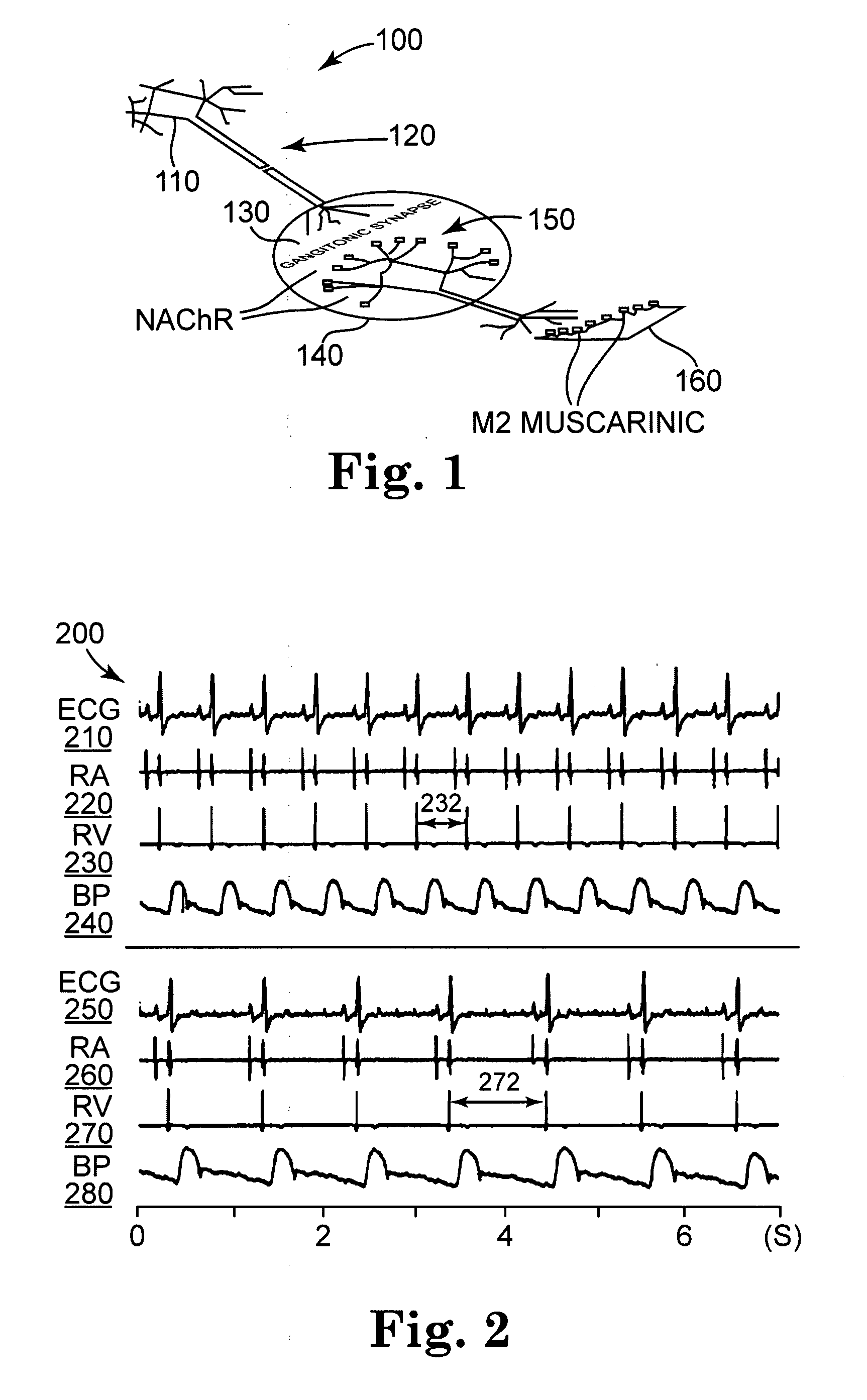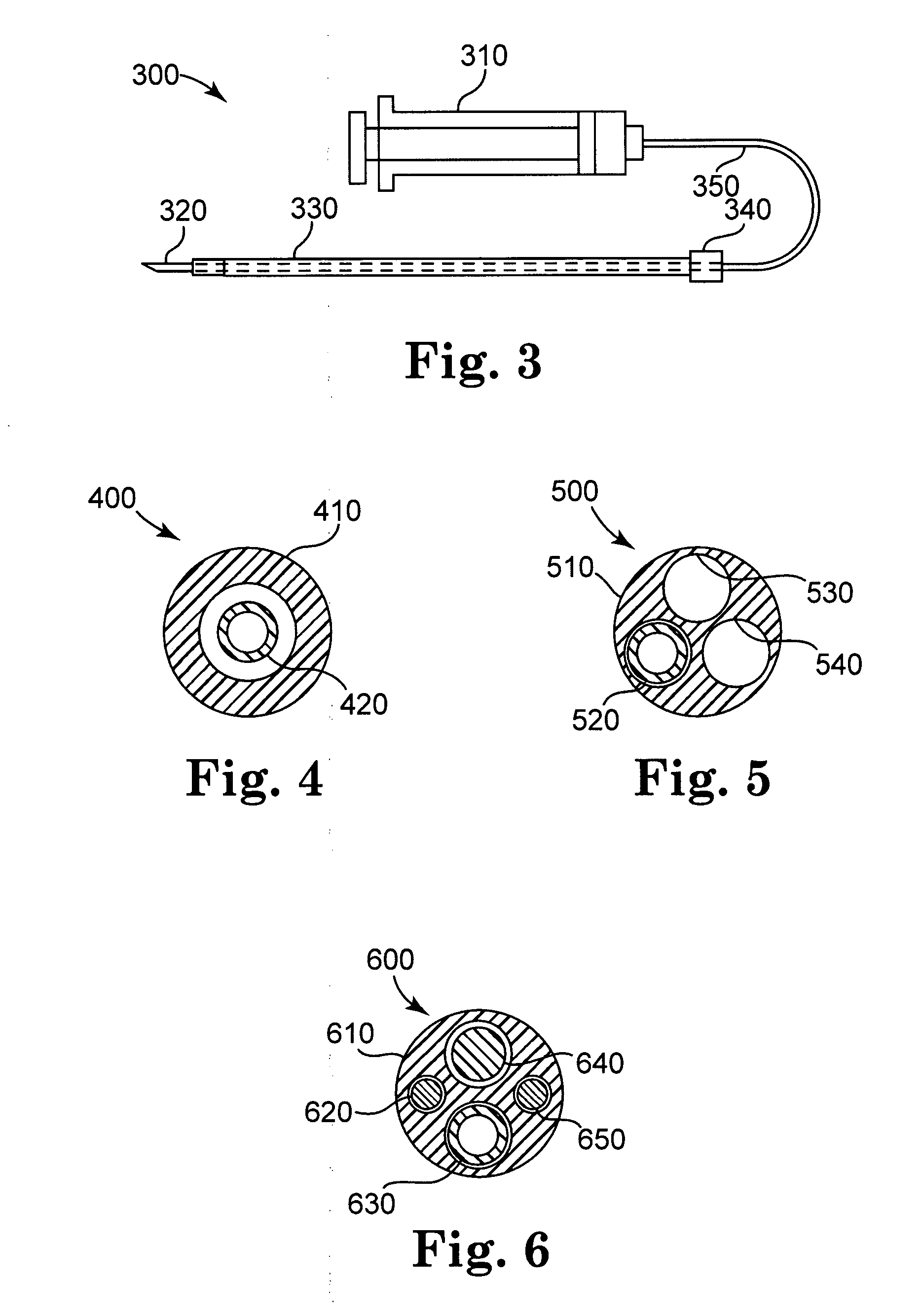Post-operative control of cardiac arrhythmia by modification of neuronal signaling through fat pads of the heart
- Summary
- Abstract
- Description
- Claims
- Application Information
AI Technical Summary
Benefits of technology
Problems solved by technology
Method used
Image
Examples
experimental example 1
[0117] Surgical preparation was as follows. Two adult mongrel dogs (body weight 23-30 kg) were premedicated with thiopental sodium (20 mg / kg) intravenously, and intubated and ventilated with room air supplemented with oxygen as needed to maintain normal arterial blood gases by a respirator (type Narkomed 2, available from North American Drager Inc. of Telford, Pa.). Anesthesia was then maintained with 1-2% isoflurane throughout the experiment. Normal saline solution was infused IV at 100-200 mL / h to replace spontaneous fluid loses. Standard surface ECG leads (I, II, III) were monitored continuously throughout the entire study. Intermittent arterial blood gas measurements were taken and ventilator adjustments were made to correct any metabolic abnormalities. Rectal temperature was monitored with a rectal probe and an electrical heating pad under the animal and operating-room lamps were used to maintain a body temperature of 360 C to 370 C.
[0118] The right femoral artery was cannulat...
experimental example 2
[0123] In a clinical study, a type CM-1 fibrin sealant formulation was injected into the SA nodal and AV nodal fat pads for reducing the incidence of post-operative AF in patients undergoing low to moderate risk open chest surgery. The injection of the fibrin sealant is believed to have achieved temporary modification of the epicardial fat pads in patients undergoing low to moderate risk open chest surgery, thereby moderating the imbalance of the autonomic nervous system that typically occurs after surgical intervention and is a major determinant in post-op atrial fibrillation.
[0124] Eighteen human patients, fifteen of which were men, with a mean age of 66±8 years, a mean Euroscore of 4.1±2.6, and presenting for CABG and / or mitral valve surgery and with no previous history of AF were included in this study. SA and AV fat pads were defined using high frequency stimulation. CM-1 fibrin sealant formulation was injected into the defined fat pads during the planned surgical procedure. A...
experimental example 3
[0138] Alginate was injected into the SAN and AVN fat pads using a protocol similar to that used in Experimental Example 1. The injection site was confirmed by stimulation of the fat pads. The effect of the injected material was tested by applying cervical vagal stimulation. The observed result was the strong attenuation of the cervical vagal stimulation, suggesting that the injected material was effective over the short term to functionally inhibit neuronal signaling in autonomic ganglia contained in the fat pad.
[0139] The alginate formulation used was a self-gelling alginate available from the NovaMatrix Division of FMC BioPolymer of Drammen, Norway. This alginate has two components, a calcium component and a sodium alginate component, which are premixed in a single lumen, dual chamber delivery system. While the amount of alginate and proportions of the components may be varied as desired, 4.0 ml of alginate was used in this experiment, with a 4:1 ratio of the calcium component (...
PUM
| Property | Measurement | Unit |
|---|---|---|
| Fraction | aaaaa | aaaaa |
| Fraction | aaaaa | aaaaa |
| Fraction | aaaaa | aaaaa |
Abstract
Description
Claims
Application Information
 Login to View More
Login to View More - R&D
- Intellectual Property
- Life Sciences
- Materials
- Tech Scout
- Unparalleled Data Quality
- Higher Quality Content
- 60% Fewer Hallucinations
Browse by: Latest US Patents, China's latest patents, Technical Efficacy Thesaurus, Application Domain, Technology Topic, Popular Technical Reports.
© 2025 PatSnap. All rights reserved.Legal|Privacy policy|Modern Slavery Act Transparency Statement|Sitemap|About US| Contact US: help@patsnap.com



